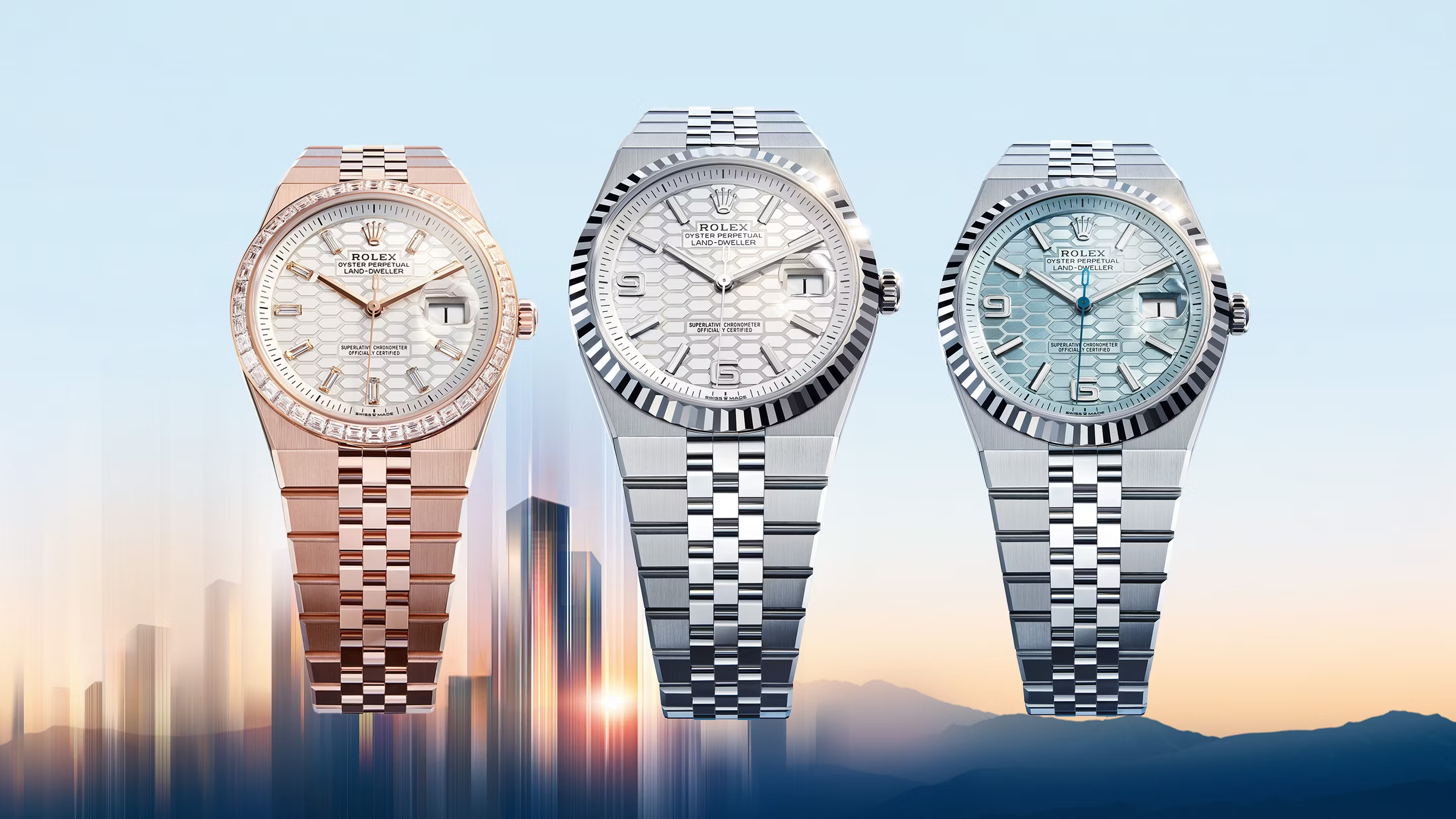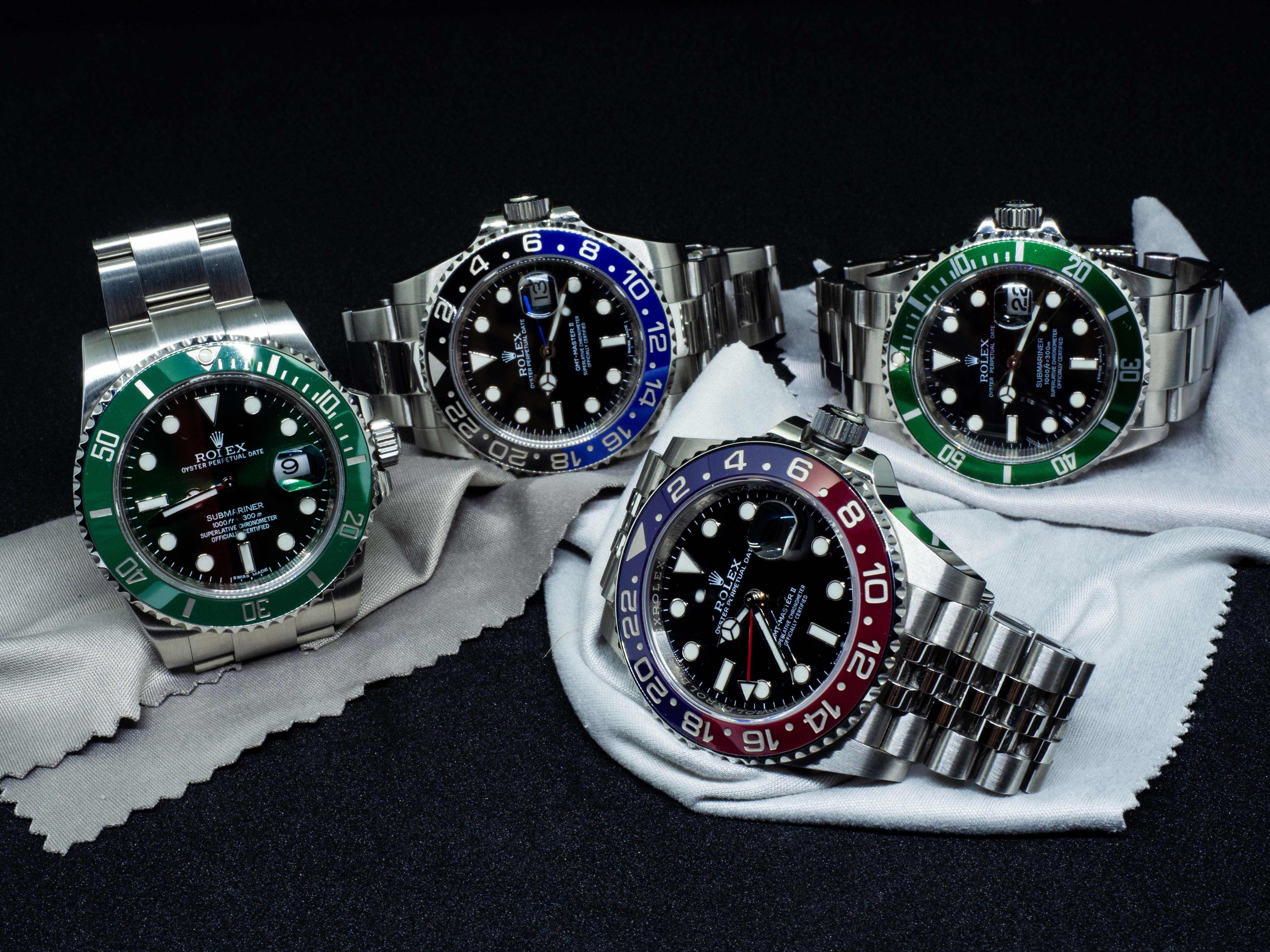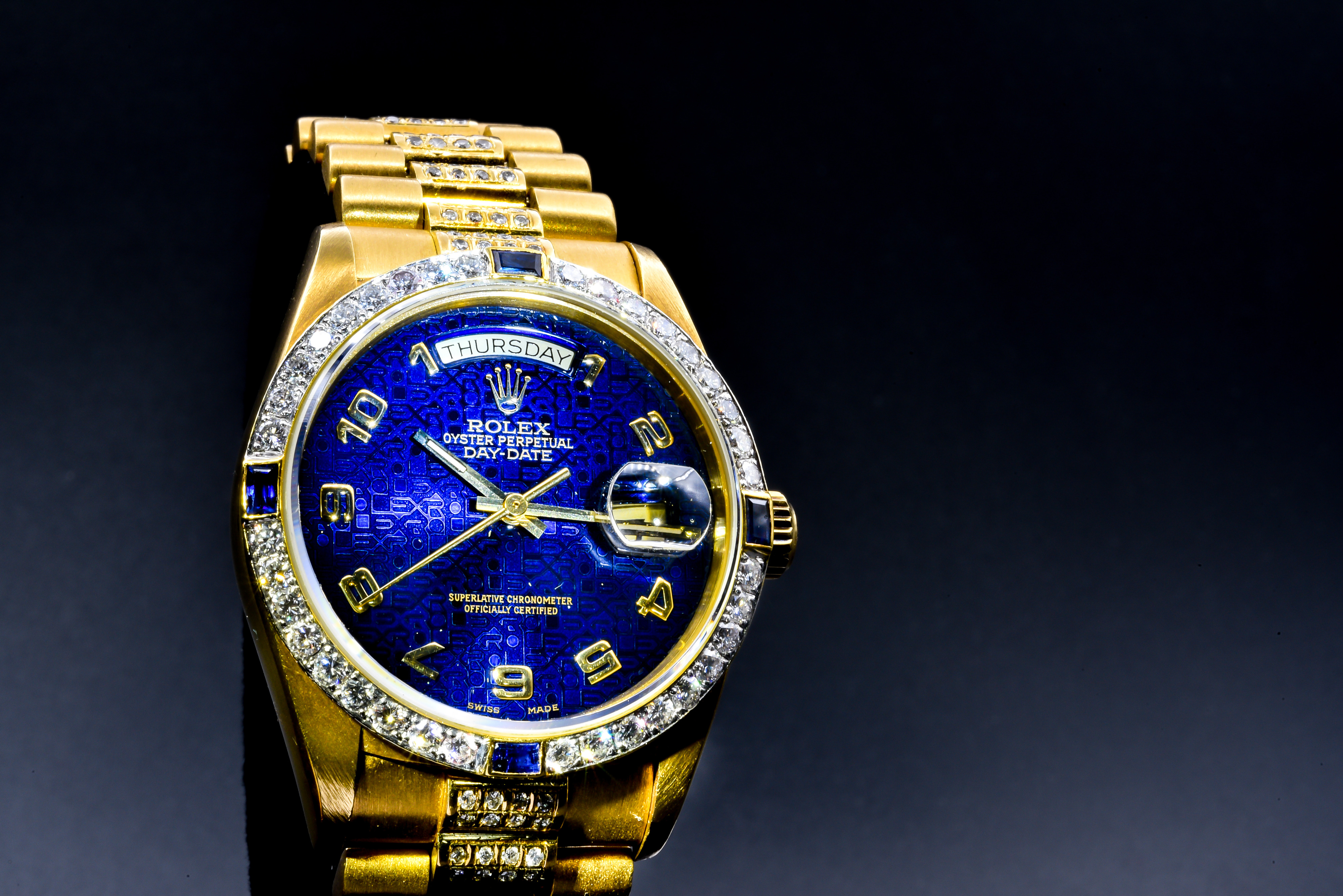For 120 years, Rolex has reigned supreme in the industry, standing as a pinnacle of precision and luxury in watchmaking. Founded in 1905 by Hans Wilsdorf and Alfred Davis, the brand quickly rose to prominence through relentless innovation and unparalleled quality. Unlike mass-produced watches, every Rolex piece boasts meticulous craftsmanship — each component designed and assembled to meet the highest standards.
The secret to Rolex’s success lies in its in-house manufacturing and controlling all aspects of production, forging its own gold alloys to create proprietary movements. The Oyster case took waterproof watchmaking to new levels in 1926, while the Perpetual rotor was introduced in 1931, opening up the era of modern self-winding mechanisms. A century later, Rolex movements still undergo rigorous testing with Superlative Chronometer certification, ensuring accuracy within -2/+2 seconds per day — a stat which far exceeds industry standards.
The Rolex aesthetic is another calling card in refinement that is legendary. Cases and bracelets are handcrafted to perfection, and all dials undergo several layers of lacquering to add depth and luster. The brand’s dedication to precision with each release guarantees that each Rolex timepiece serves as part of a legacy.
Defining moments in horological history

Rolex’s participation in shaping watchmaking history is undeniable, and its contributions have helped to accelerate the industry at large.
The 1926 Oyster is recognized as the world’s first waterproof wristwatch, confirmed when Mercedes Gleitze swam the English Channel wearing one.
In 1953, the Submariner set a new standard in dive watches, and in 1954, the GMT-Master catered to jet-setting professionals who lived across time zones.
In the 1960s, Rolex climbed to new heights by delving to depths of nearly 11,000 meters when the Oyster Perpetual reached the Mariana Trench strapped to the Trieste bathyscaphe.
In 1963, the Daytona release unofficially merged the company to motorsport, with its chronograph precision becoming the preferred selection by racers like another icon, actor Paul Newman.
In the modern times, Rolex continues to innovate and lead the industry. The 2005 Cerachrom bezel introduced ceramic materials that are both scratch and fade-resistant, while the 2015 Everose gold formulation preserves rosé hues.
With each successive milestone, Rolex has cemented its reputation as a pioneer unafraid of merging tradition with state-of-the-art advancements.
Anniversary releases: Celebrating 120 years of excellence

Serious watch collectors look forward to Rolex’s milestone anniversaries as they are known for releasing limited editions and introducing new technical breakthroughs. The 50th anniversary of the Submariner in 2003 saw the brand introduce the Maxi dial with bigger luminescent markers. Today, they are considered one of Rolex’s signature looks. And for the brand’s 100th anniversary in 2005, the groundbreaking GMT-Master II was unveiled featuring a Cerachrom bezel.
For its 120th year, rumors suggest Rolex may debut a new complication, but the brand is known for its secrecy, so surprises are guaranteed. Collectors also anticipate engravings or special dial textures to be introduced as part of the commemoration. Whether through subtle accents or bold recalibrations, these releases will surely honor Rolex’s heritage while pushing the industry forward yet again.
Rolex’s most innovative pieces

Rolex’s catalog is one of the most respected in the industry and has remained at the forefront for over a century with several notable timepieces. In 1956, the Day-Date became the first wristwatch to display the full day and date, earning it the ‘President’ nickname – a moniker that has remained for several generations. In 1963, the Cosmograph Daytona set a new standard for racing chronographs, while the release of the Sea-Dweller introduced a helium escape valve for saturation divers in 1967.
In 2007, The Yacht-Master II delivered with a programmable regatta timer, and the Sky-Dweller released in 2012 to combine an annual calendar with dual time zones. In 2015, the Oysterflex bracelet brought durability to a new level with a metal-reinforced elastomer strap. Each model aligns with Rolex’s commitment to innovation, whether for explorers, aviators, or businessmen. The brand’s classic designs ensure they remain coveted across generations.
What we’d like to see in the future
Watch enthusiasts anticipate bold evolution for the Rolex brand, and a titanium sports model would merge lightweight durability with their singular aesthetics, while a skeletonized dial could showcase the brand’s movement artistry without sacrificing the power it is known for.
A renaissance of ‘California dials’ could potentially draw new interest to the brand for new collectors, while enamels featuring new hues could add vintage appeal to a new release. In a move towards sustainability, a mechanical digital hybrid or solar-powered movement could inspire a new subset of luxury watches. Above all, collectors prefer access, and even though exclusivity is what makes the brand pop, an expanded production for a few select releases could shorten waitlists and pique further interest in Rolex. Whatever the future may hold, one constant remains: Rolex will continue to set the standards of time for generations to come.




